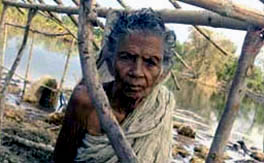Disaster management in India

This new report by the Disaster Management Division, Ministry of Home Affairs has detailed information on various types of disasters, institutional framework and policy guidelines in disaster management. It also presents the roadmap in tackling disasters.
India’s geo-climatic conditions as well as its high degree of socio-economic vulnerability, makes it one of the most disaster prone country in the world. A disaster is an extreme disruption of the functioning of a society that causes widespread human, material, or environmental losses that exceed the ability of the affected society to cope with its own resources. Disasters are sometimes classified according to whether they are “natural” disasters, or “human-made” disasters. For example, disasters caused by floods, droughts, tidal waves and earth tremors are generally considered “natural disasters.” Disasters caused by chemical or industrial accidents, environmental pollution, transport accidents and political unrest are classified as “human-made” or “humaninduced” disasters since they are the direct result of human action. This document captures the measures undertaken and systems established for disaster management in the country,
See Also
Report: Strengthening disaster management.
Report: Disaster management and climate change.
Feature: If disaster strikes.
Opinion: No two droughts are alike.
Opinion: How climate ready are we?
Report: Worldrisk report 2011.
Report: Ecological and nontraditional security challenges.
Report: Economic impact of disasters.
Report: The Asia-Pacific disaster report.
Related Content
- Environment (Construction and Demolition) Waste Management Rules, 2025
- Report filed by the Wadia Institute of Himalayan Geology on the massive land sinking at Pernote village in Ramban district of Jammu & Kashmir, 27/01/2025
- Economic assessment of drought risk management
- Sociocultural dimensions in water resources management: policies, practices, and challenges
- From sun to roof to grid: the economics and policy of distributed PV
- Nature-based solutions for flood management in Asia and the Pacific
